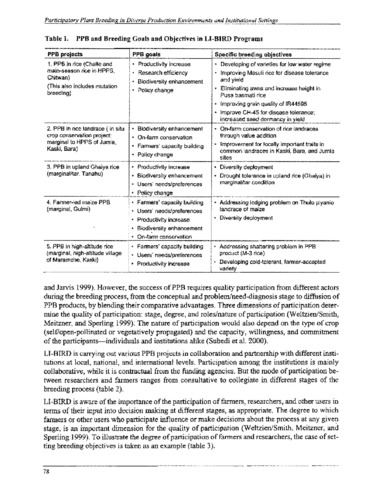Development of new plant type for pinto beans: Progress, problem and future prospects
Abstract
Research and development of a reliable dry land production system for common bean (Phaseolus vulgarisL.) based on low-cost direct seeding and direct harvest methods was initiated at the Crop Development Centre at the University of Saskatchewan in the late 1980s. The target production area is a dry land spring wheat farming region in which lentil and pea production is well established. Effort is focussed on production of the pinto class. Three major potential improvements to the production system were identified: harvest equipment modification to improve direct harvest capability, development of early maturing germplasm with reliable expression of a crop canopy suitable for direct harvesting systems, and appropriate agronomy to improve the reliability of production. The research effort in harvest equipment modifications resulted in commercialization of a new design of lifter and reel assembly for combines equipped with floating cutter bar headers. Field scale evaluations showed that a 50% reduction in cutter bar loss is possible with cultivars with Type III growth habit. Agronomy research for new production systems has been limited to development of improved rhizobial strains, but new areas of research will be explored as appropriate cultivars become available. Research in the area of germplasm development is specifically focussed on gains in early maturity and improvements in canopy structure, particularly for the pinto class. The ideal canopy structure for the production system is one in which all pods are situated above the combine cutter bar at the time of harvest. Specific improvements to the canopy structure include development of early maturing genotypes with elongated Type I growth habit, Type II growth habit or Type III growth habit without basal clustering of pods. In addition, an effort is underway to develop genotypes with shorter pods to maximize cutter bar clearance are under development and with pods with reduced lignin to minimize shattering and maximize cutter bar clearance. Reduction of lignin in pods may help reduce shattering at the time of harvest due to reduced dehiscence. Pods with reduced lignin tend to curve upward at the time of maturity, allowing better clearance of the cutter bar. Agronomic comparisons of F2-derived F4 and F5 lines showed that in some populations cutter bar losses can be reduced by up to 50%.

